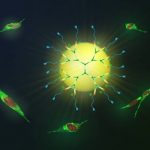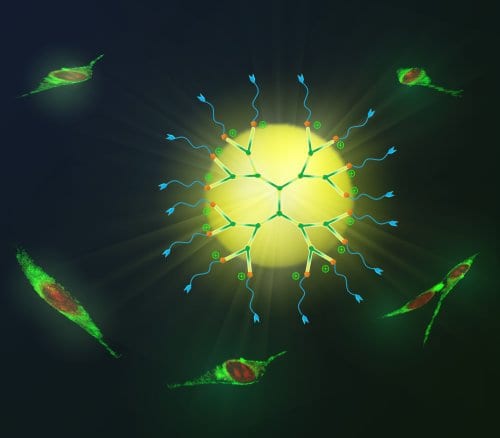Fluorescent sensors find widespread applications in clinical diagnostics, environmental monitoring, and many other fields. Advances in synthetic and polymer chemistry have led to polymeric materials with highly controlled architectures and tunable properties. These developments have also expedited research in the area polymer based sensors.
have led to polymeric materials with highly controlled architectures and tunable properties. These developments have also expedited research in the area polymer based sensors.
Macromolecular Rapid Communications now highlights recent advances related to the synthesis, characterization, and applications of polymeric materials, especially conjugated polymers, for fluorescent sensor applications. This special issue is guest-edited by two of the leading figures in the field: Bin Liu (National University of Singapore) and Ben Zhong Tang (Hong Kong University of Science and Technology). Topics covered in this issue include polymeric nanoparticles for magnetic/fluorescence imaging, cell tracing, cell migration inhibition, and protein detection; conjugated polyelectrolytes for ion detection, in vitro and in vivo biomarker sensing and imaging; conjugated polymer- and oligomer-based monitoring of protein aggregation; and detection of metal ions, explosives, volatile organic compounds, and enzymes.
Read selected articles now for free – for a limited time!
Bin Liu and Ben Zhong Tang: The editorial by the guest-editors provides a brief introduction into the field of fluorescent sensors.
Jong-Man Kim et al.: A litmus-type sensor system for the detection of volatile organic compounds is developed using a common office inkjet printer.
Seiji Shinkai et al.: Fluorescence sensing along with molecular self-assembly leads to a highly selective sensory system for biologically important molecules.
Guillermo C. Bazan et al.: A cooperation of researchers from Coimbra (Portugal), Wuppertal (Germany), and Santa Barbara (USA) show that a reference correcting for instrumental and environmental variations can be built into a single polymer sensor by combining two blocks, one consisting of a blue light-emitting uncharged polymer (polyfluorene) and the other a positively charged orange/red-emitting polymer (polythiophene).

















